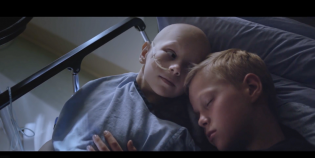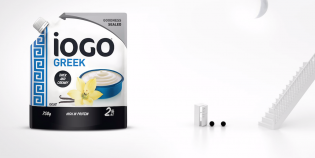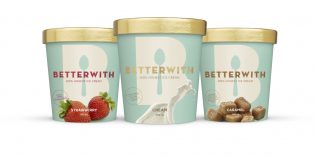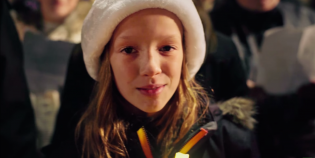Arianna Huffington, some Cirque du Soleil acrobats and Rod Blagojevich walk into a New York bar… OK there’s no punch line, but the scope of speakers and presentation topics at the sixth annual Advertising Week at the end of September seemed to draw representatives from every corner of media and advertising. Want to talk celebrity branding? Check. Hear what AOL CEO Tim Armstrong has to say about the company’s recent acquisitions? Uh-huh. See what a creative looks like in the 21st Century? Yep. Catch Tyra Banks, Chuck Porter and Seth Godin on the same stage? Sure. See the mayor of Montreal serve poutine to prancing ad partiers? Oui. With such a range of options, one must plot and scheme around the weeklong schedule, make some tough choices and, ultimately, hope to learn something new, meet someone interesting and try to get a peek at where the world of advertising, marketing and media sees itself headed. Oh, and win new business.
“First of all it’s about business, it was a very good week for business,” said Taxi chairman Paul Lavoie, a participant in the Montreal ad community’s invasion of New York (see sidebar). “Secondly, it’s just a good place to gauge where the business is going. The issues are the same, everyone’s trying to figure out where the sweet spot is in the industry, but of course that sweet spot moves every minute. “The bulk of the advertising budgets around the world are in the U.S., the bulk of those are in New York and basically the who’s who of the community is at Advertising Week.”
As the industry slowly emerges from recession mode, with renewed engagement and commitment to innovation, conference organizers expected to eclipse last year’s reported attendance of more than 60,000. “It was absolutely record-breaking crowds for us across the board,” said Advertising Week executive director Matt Scheckner. “The enthusiasm of the industry and attendees was very gratifying. Our measure of success is the response from the industry, the crowds, so when we see line-ups to get into presentations it’s tremendous.”
Marketing took in as many of those presentations as possible. Here are some of the stories and insights shared therein:
A NEW GAY DAY
Monday morning marked the first time the issue of marketing to the gay community had been discussed at the conference. The panel at the Paley Center for Media included Microsoft chief creative officer Gayle Troberman, American Airlines’ director of diverse segment marketing Betty Young, Andy Bagnall, vice-president of specialty shop Prime Access, and Amy Wigler, VP integrated marketing TV and online for LOGO/MTV Networks.
Wigler, who makes custom creative for clients such as Subaru, Unilever, Sears and Johnson & Johnson, said smart marketers have recognized the advantages of reaching out to this market. “This is a group of consumers that are passionate about who they are, who have an enormous amount of respect for those that acknowledge them as human beings, and will reward that respect with both their brand loyalty and dual-income-no-kids,” she said. “If you’re not in this space and you’re a Fortune 500 company or a Mom and Pop store down the street, you should be.” While gay-focused ads themselves may or may not be vague in their messaging, Prime Access’ Bagnall said it is a good idea to specifically invite the gay and lesbian consumer into your business.
“That can happen a number of ways, whether through gay-specific creative or sponsorship of events. Whatever it is, you need to let them know you support them, you want their business and it’s not just about running an ad in gay media.”
PUTTING THE ‘Y’ IN LUXURY
The panel “Attracting Generation Luxur-Y” discussed the growing importance of Generation Y to the survival of luxury brands. “There’s more Gen Y now than baby boomers and by 2017 their spending will eclipse that of baby boomers,” explained Scott Galloway, founder of digital think tank L2 and luxury market professor at NYU’s Stern School of Business. “[Luxury brands] need to rethink the customers they have, the channels and media they use and more.”
According to Galloway, the luxury market is spending on average just 4% of its media spend online even though Gen Y consumes most of its media in the digital space. Galloway ended the session with a bold statement on the importance of paid media. “Advertising may be the tax that mediocre brands have to pay going forward,” he said, pointing to the necessity of using creative execution and utility for earned media engagement. “You’re going to need [paid media] for some support, but what are you doing to inspire rather than interrupt?”
WAITING FOR THE $6 MILLION WEBSITE
While much of Advertising Week focused on the various aspects and emerging importance of the digital space, one panel aimed to address production costs and what is appropriate for the work marketers are asking for. Barbarian Group co-founder and COO Rick Webb said it’s unfortunate that the emphasis is too often on video while other advantages of the web are forgotten. “The million-dollar websites are going to look like Facebook, in that they’re websites that are expensive to build but do something really cool.” Greg Galbraith, Converse sneakers’ director of content and partnerships, touched on how his brand mixes smallbudget projects, like backstage web videos from sponsored concerts, with larger productions like the “Three Artists, One Song” project, which brought together three artists (Kid Cudi with members of Vampire Weekend and Best Coast) and garnered Converse a slew of earned media.
“As brands, we’re competing in this giant universe of other content creators and we only have a few tricks up our sleeve that they don’t have,” Webb said. “[Consumers] will like our stuff if we do something they can’t do themselves and production values are a big part of that.”
THE AGE OF ENGAGEMENT
Popular topics atop many an Advertising Week agenda were “content” and “engagement,” two themes deemed essential for future success in advertising or media. A panel on digital publishing opened its wide-ranging discussion with a big question: Has the Internet failed as a brand medium?
Erin Clift, senior vice-president, global sales development at AOL, said “failed” is a strong word, but the Internet as it exists today isn’t built for what brands are trying to accomplish.
Andy Wiedlin, vice-president of The Huffington Post, said it’s actually advertising that has failed. “Whether you look at online or TV or print, 95% of ads suck, and on the Internet maybe it’s 96%,” he said. “Great creative always breaks through. We’re experimenting with larger units, integrating content with video and Twitter and blog feeds to try and make it a bit more engaging.” While the panel agreed that marketers need to see accurate ad measurement to justify investments, they also lamented measurement’s often adverse effect on innovation.
“[Advertisers] say, ‘We want something new and innovative, but we want measurement, best practice and you need to fill out this spreadsheet.’ That’s the thing about trying something new: it’s new.” Despite the rainy weather, spirits were high in an industry and city that saw its fair share of bleakness over the last couple of years. As ad budgets slowly creep back and more marketers look at innovating in the digital space, Advertising Week emitted a solid sense of optimism for the industry’s near future.
Sure, some panels devolved into sales pitch territory (We’re looking at you, EA Games), while others gave audiences a chance to hear the background on breaking news (AOL’s acquisition of TechCrunch), but overall it was a week delivered as billed–a collection of celebrities, ad stars, media moguls, tech wizards and culture nerds on what they do, how they do it and where it’s all headed. “There’s all kinds of learning, all kinds of networking, people are making deals–it’s become a real marketplace of sorts, above and beyond the fun and frolic,” said Sheckner. “Fundamentally, what Advertising Week does is make a lot of people smile and feel good about being in the business. And there’s great value in that.”










